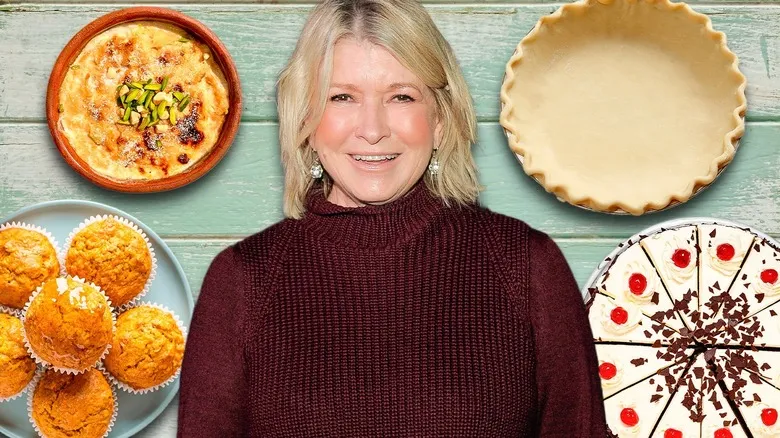Grate butter for flakiness
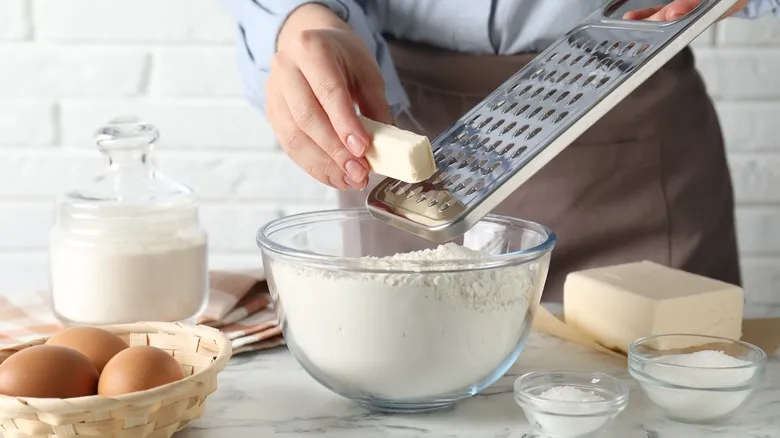
If you're an enthusiastic baker, you're likely familiar with the annoyance of dealing with cold butter. Using it straight from the fridge can be quite a challenge, whether you're simply trying to spread it on a slice of bread or incorporating it into a recipe. Luckily, Martha Stewart has a helpful tip that can simplify the process.
Interestingly, Stewart's advice involves making the butter even colder by freezing it. This allows you to use a box grater to shred the butter just like you would with cheese. She shared with Good Morning America, "You'll have no trouble achieving the most beautiful flakiness in biscuits, scones, pie crusts, and other laminated doughs."
By grating the butter, you gain complete control over its distribution and the amount you use. It strikes the perfect balance between a hard, unmanageable chunk of butter and melted butter that’s difficult to control. The grated butter can be easily sprinkled into your dough, and you can add more as needed. This clever tip will enhance the texture of your baked goods and minimize the frustration you experience while preparing them.
Sweeten muffins with dried fruit instead of sugar

While we all enjoy a baked good from time to time, it can be challenging to find one that strikes the perfect balance of sweetness. Many options that advertise themselves as low in sugar often fall short in flavor as well. Fortunately, Martha Stewart makes it simple for home bakers to whip up a delightful muffin that boasts just the right amount of fruity sweetness, thanks to dried fruit.
In her Instagram post, Stewart suggests enhancing bran muffins with a blend of regular dark raisins and golden raisins, along with a splash of prune juice. Golden raisins, derived from the same grapes as their dark counterparts, undergo a different drying process, resulting in a lighter color and a subtle sweetness that complements the muffins beautifully. These dried fruits retain the same nutritional benefits as their fresh counterparts, ensuring that your muffins are both delicious and nutritious. Once you've tried the raisin version, feel free to experiment with other dried fruits—apricots or cranberries can add a delightful tangy sweetness to each bite.
Make a buttermilk substitute if you run out
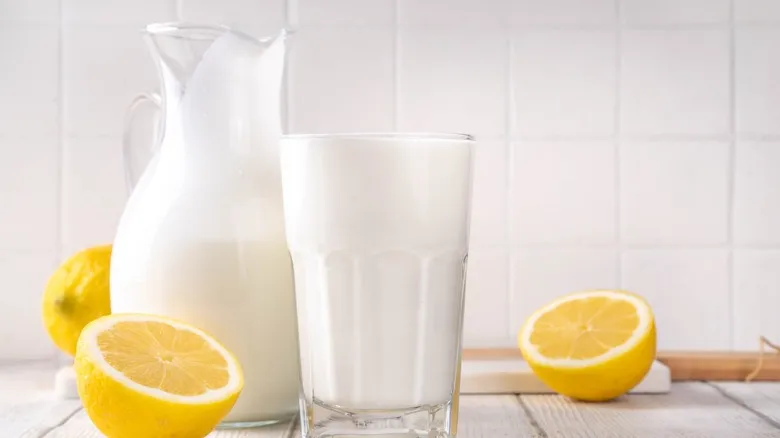
Buttermilk is a popular baking ingredient, and it's beneficial to keep some on hand in your refrigerator if possible. Its name originates from the traditional process of making butter, where the leftover liquid after churning was used. Today, buttermilk is produced differently; it is made by introducing bacteria to milk, which ferments it and gives it a tangy taste.
If you need buttermilk for a recipe but don’t have any, Martha Stewart recommends a simple homemade alternative that works quite well. In baking, buttermilk plays a crucial role by reacting with baking soda to produce carbon dioxide bubbles, which are essential for achieving light and fluffy baked goods. This reaction requires an acidic component to interact with the alkaline baking soda. Stewart's method involves adding an acidic ingredient, like vinegar, to regular milk to create a suitable substitute. Her straightforward recipe consists of mixing one part vinegar with three parts milk.
Alternatively, you can use the same amount of lemon juice in place of vinegar to create this substitute buttermilk. Allow the milk and acid mixture to sit for about 10 minutes before incorporating it into your recipe, and then proceed with the remaining instructions as usual.
Add sour cream to keep cakes light

When you take a moment in the afternoon to enjoy a cup of tea and a slice of cake, your main desire is for the cake to have a delightful, airy texture. Achieving this can be a challenge, but Martha Stewart has a secret ingredient that can help keep your cakes moist while also providing that lightness. By incorporating sour cream into your cake batter, you can strike the ideal balance between texture and flavor, enhancing the overall taste without overshadowing the other ingredients.
In her banana bread recipe, Stewart emphasizes that substituting sour cream for milk or buttermilk boosts the fat content of the mixture—after all, fat is synonymous with flavor. The acidity of sour cream plays a vital role as well. Since gluten is a protein, the acid helps to tenderize it, much like a squeeze of lemon juice can soften a steak. Additionally, it can react with baking soda similarly to buttermilk, but without making your batter overly liquid. Stewart frequently includes sour cream in her cake recipes, such as pound cake and chocolate cake. So, why not give this tip a try the next time you bake and discover the positive impact it can have on your desserts?
Save the edges of brownies as an ice cream topping
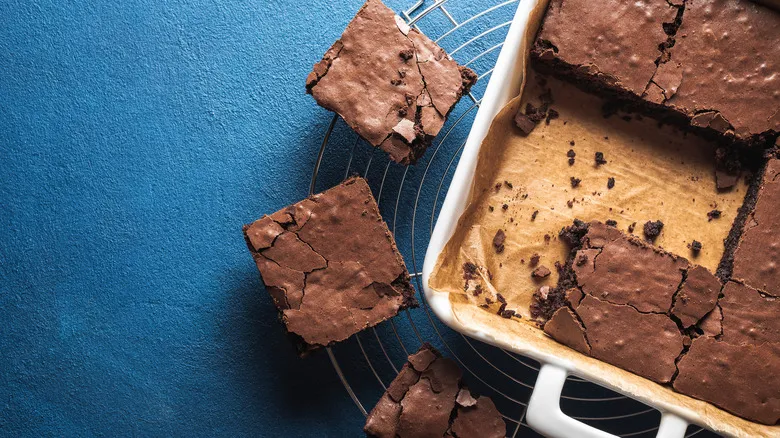
For some individuals, the crispy edges that form around the pan after baking are the most delightful parts. Whether it’s the charred piece of pasta on a lasagna or the crunchy corners of a tray of brownies, many a family dinner has sparked debates as everyone vies for their preferred piece. However, when cooking for guests, you want your desserts to appear as polished as possible, and ragged, nearly-burnt edges simply won’t suffice.
In her TikTok video, Martha Stewart suggests trimming the edges off your brownies before serving them to guests, but she also acknowledges the tragedy of letting those bits go to waste. While one option is to sneakily enjoy them yourself, Stewart offers a clever solution that allows everyone to enjoy those tasty leftovers. Simply cut them into bite-sized pieces, store them in your freezer, and you’ll have a fantastic homemade brownie ice cream topping ready whenever you need it. And if ice cream isn’t your thing, they pair just as well with yogurt or even a bowl of chia pudding.
Make a hole in your soufflé
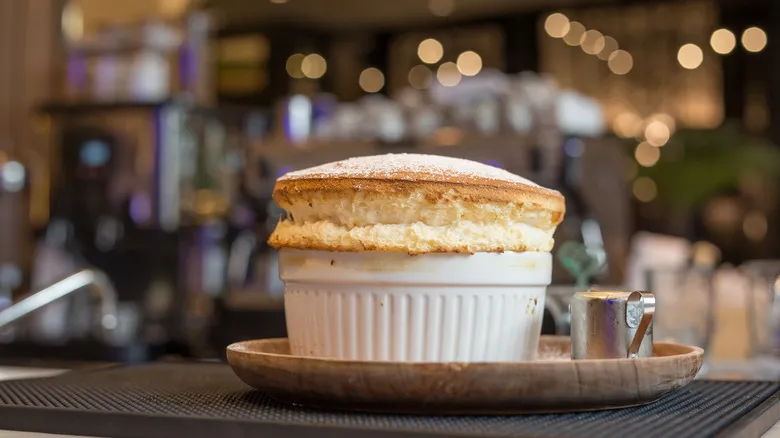
Preparing a soufflé for dinner guests, whether they are family or friends, is quite a significant task. This dessert often poses a challenge for many home cooks, as well as some professionals. Achieving the perfect rise and ensuring it remains elevated is no small feat, and it's something to take pride in when you succeed. However, Martha Stewart's advice on soufflés pertains not to the cooking process, but to the serving technique.
When a soufflé is presented to her, Stewart prefers to create a small hole in the center and pour in the accompanying crème anglaise. This clever tip allows your guests to savor the smooth custard sauce with each bite of the still-fluffy soufflé, rather than drenching it on top and watching it deflate. As the host, you can choose whether to do this for your guests or invite them to add the sauce themselves.
Add orange zest to bread pudding
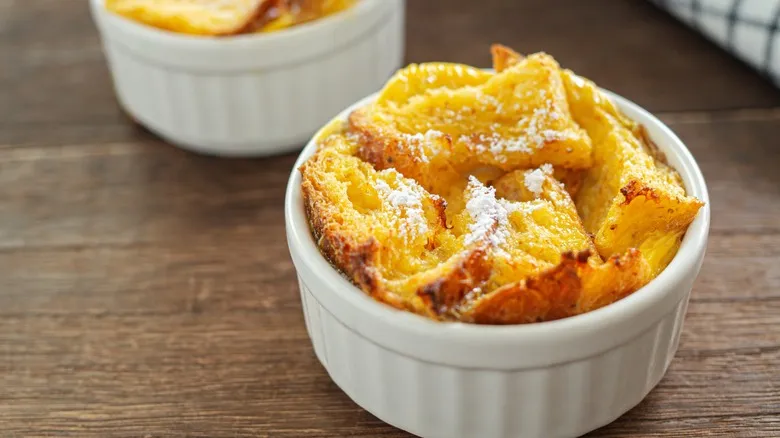
Bread pudding is the epitome of comforting desserts—decadent, rich, and wonderfully sweet. However, it can sometimes benefit from a burst of brightness, and Martha Stewart has the perfect solution: orange zest. In addition to cranberries, cherries, and prunes, Stewart enhances the flavor by grating fresh orange zest into the mixture.
Citrus zest is rich in essential oils, which provide the fruit's unique aroma and taste. If you enjoy incorporating alcohol into your bread pudding, as Stewart does, opting for an orange-flavored liqueur like Grand Marnier will amplify the orange essence throughout the dish. Alternatively, sprinkling a few dark chocolate chips on top will create a delightful chocolate-orange pairing. The result is a bread pudding that is both comforting and invigorating, destined to become a beloved family treat.
Use chilled dough — it is easier to work with
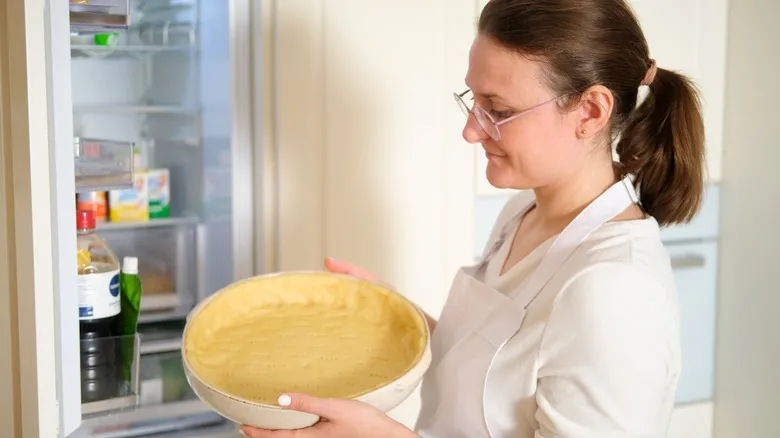
As a home baker, you will inevitably face the challenge of dealing with soft dough that clings to everything while you attempt to roll it out—your hands, the rolling pin, the countertop—it can be quite frustrating. If this is a frequent issue, Martha Stewart offers excellent tips for keeping your dough firm yet flexible. According to Marthastewart.com, her top piece of advice is to "Make it cold and bake it hot." By using ice-cold water to prepare the dough and chilling it in the refrigerator until you're ready to roll, you can not only prevent sticking but also enhance the texture of your finished pie, resulting in beautifully flaky layers.
If you're looking to create a lattice top for your pie, Stewart suggests assembling the lattice on a sheet of baking paper on the countertop instead of directly on the pie. The chilled dough will be much easier to weave on a flat surface, allowing you to alternate over and under until you achieve a lovely crisscross design for your pie lid.
Use an ice cream scoop to measure out cookie dough evenly
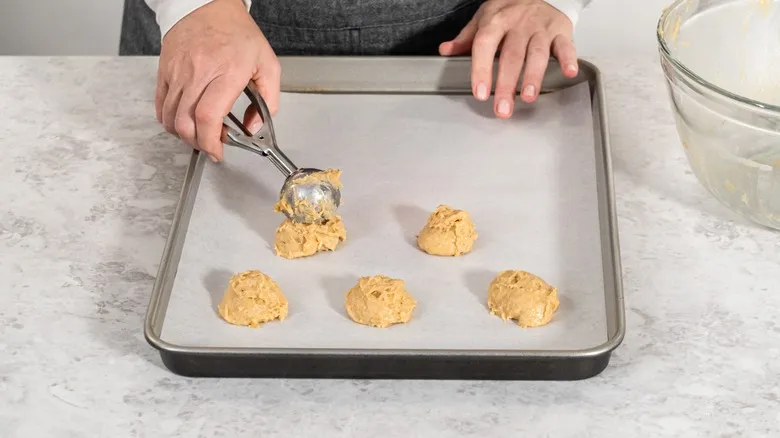
Whether you're baking for a large group or aiming to wow your family, your goal will be to create cookies that are uniform in appearance and evenly baked. Martha Stewart utilizes a tool that you probably have tucked away in your cutlery drawer to portion the cookie dough, ensuring that each cookie resembles the others.
Take your ice cream scoop, ideally one with a trigger mechanism, and use it to gather a level amount of the cookie dough. Place it onto the baking sheet, then repeat the process to create another identical scoop. Make sure to leave ample space between each portion on the tray, as they will spread while baking, and you want to avoid them merging together. This straightforward technique allows for accurate measurements without the need for specialized tools, resulting in cookies that look far more professional.
Spray the inside of measuring cups to prevent liquids from sticking

If you're looking to incorporate sticky ingredients like honey or syrup into your baked treats, measuring them can be quite tricky. Often, some of the substance remains in the container, leaving you unsure if you've added enough. Plus, the cleanup can be a real hassle. Fortunately, Martha Stewart has a simple tip that helps the liquids pour out smoothly and makes cleanup much easier.
Before you pour the sticky liquid into the measuring cup, give the inside a quick spray with cooking oil. Then, add your molasses, peanut butter, or any other sticky ingredient, and watch it slide out effortlessly. This way, you can be confident that you’ve measured the exact amount needed for your recipe, and cleaning up will be a cinch!
Refrigerate cookie dough
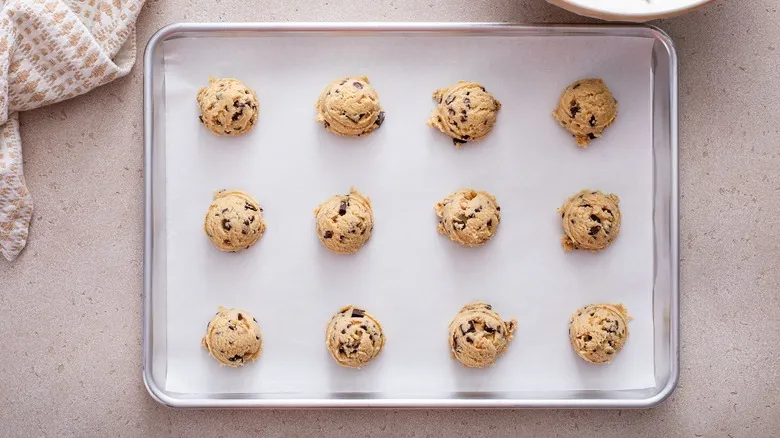
To elevate your homemade cookies, Martha Stewart offers a simple yet effective tip: refrigerate your cookie dough after preparing it. Allowing the dough to chill for at least 30 minutes enhances both the texture and appearance of your cookies.
As you might anticipate, chilling the dough will make it more solid. This is particularly crucial if you intend to cut your cookies into specific shapes. Soft dough tends to spread during baking, which can distort the clean edges of your cut-outs, while firmer dough maintains its shape better. Additionally, firmer dough results in cookies with a chewy center, which is typically the desired outcome. However, if you prefer very thin and crispy cookies, this step can be skipped. If you're pressed for time but still want to chill your dough, you can quickly freeze it instead—just aim for about a quarter of the recommended chilling time from your recipe.
Line your cake pan with parchment paper
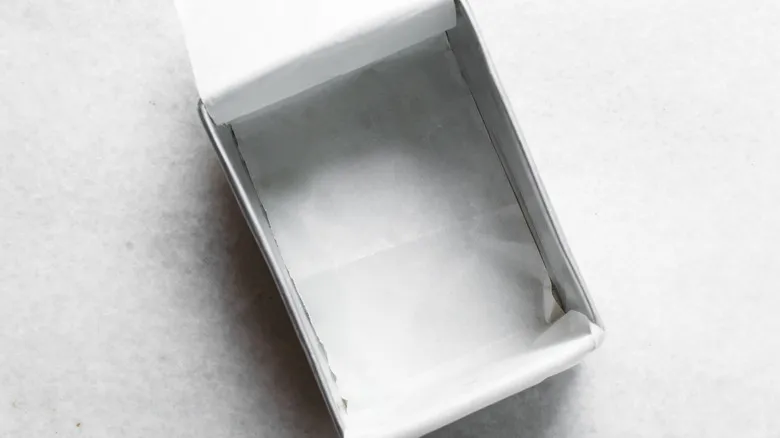
For home bakers, one of the greatest anxieties is the possibility of the cake sticking to the pan after baking. It can be incredibly disappointing to invest so much effort into your creation, only to find that when you try to remove it, a portion remains stuck in the pan.
Martha Stewart suggests using two sheets of parchment paper in the pan to prevent this issue, making it easy to lift the cake out while preserving its sharp edges and lovely shape. She starts by greasing the pan, then cuts two strips of parchment paper approximately the width of the pan. One strip is placed horizontally, and the other vertically, ensuring that the entire surface and sides are covered. Don’t worry if the corners are slightly exposed; the greasing will help prevent those small areas from sticking. Once your cake is baked and cooled, simply pull on the ends of the parchment paper. The cake will come out effortlessly, sliding off the paper in one perfect piece.
Make pie dough in food processor
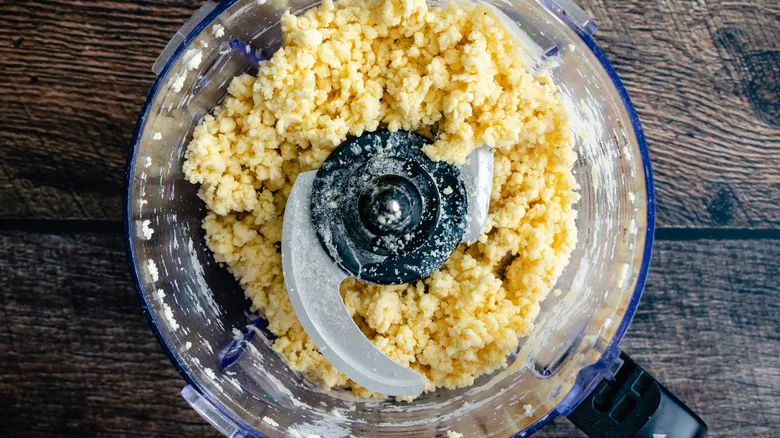
As home cooks, we often find ourselves trying to strike the right balance between doing things the traditional way and taking shortcuts to save time. It can be challenging to determine when it's worth it to cut corners. Luckily, when it comes to making pie crusts, there's a shortcut endorsed by Martha Stewart herself: using a food processor to prepare the dough.
Making dough can be quite messy, involving mixing and folding while trying to keep the ingredients cool and preventing them from sticking to your hands. Instead of battling through the process, let the food processor handle the heavy lifting for you. Start by adding the dry ingredients and pulse them until well combined, then gradually incorporate the chilled butter. Stewart emphasizes the importance of pulsing, even if it can be a bit tedious, as running the processor at full speed can lead to overmixing.
Read the recipe thoroughly and prepare ingredients before you start

In your eagerness to jump into your baking project, you might find yourself measuring and mixing before fully reading the recipe. It’s reminiscent of school when teachers advised you to carefully read the question before starting to write; it can feel like a tedious step that delays the fun. However, Martha Stewart emphasizes that a crucial part of preparation is to thoroughly read the recipe and measure all your ingredients beforehand.
If you skip this step, you might find yourself halfway through the baking process only to discover that you’re missing a key ingredient. While this might be less critical in everyday cooking, the precision required in baking means it could jeopardize your entire dish. Unlike cooking, substitutions in baking can be tricky, and if you’ve already combined some ingredients, a last-minute trip to the store may not be feasible. Taking a few moments to prepare ahead of time can save you a lot of frustration later on.
Test your baking powder regularly to see if it still works

Baking powder is a staple ingredient found in most home kitchens, and because it has a long shelf life, we often forget to replace it until it's completely used up. Its primary function is to help baked goods rise, so if your cakes are turning out a bit dense, the baking powder might be the culprit.
Regardless of the expiration date on the container, your baking powder could be past its prime, which means it may not provide the necessary lift for your recipes. Luckily, Martha Stewart has a straightforward test to check its potency. Simply mix a scoop of the powder with a cup of hot water—if you see a lot of bubbles right away, you're in good shape. If not, make sure to add it to your shopping list and get a new one before your next baking session. If your baking powder has been expired for some time, you'll be pleasantly surprised by the difference in the lightness and fluffiness of your cakes once you get a fresh supply.
Recommended
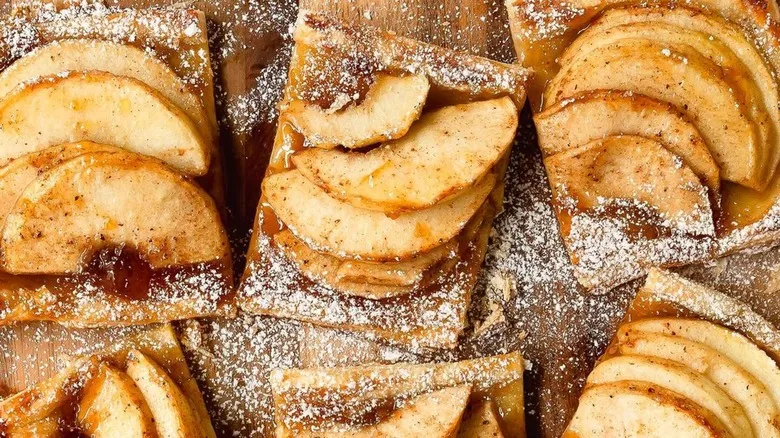
The Biggest Difference Between A Galette And A Tart
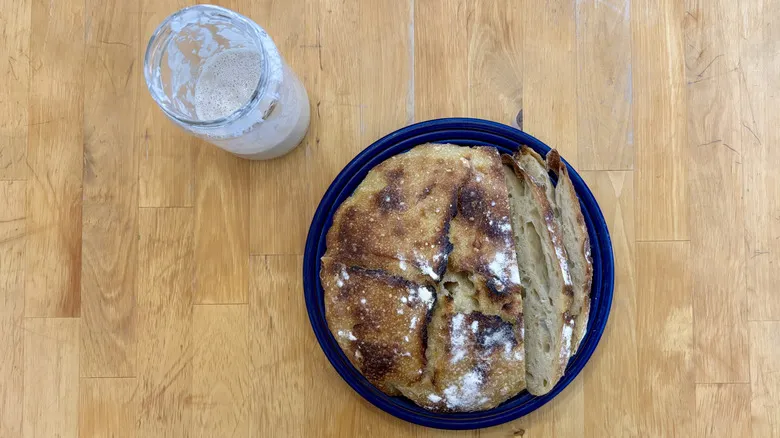
How To Make A Sourdough Starter At Home

The Worst Mistakes Causing Your Sponge Cake To Sink, According To Paul Hollywood
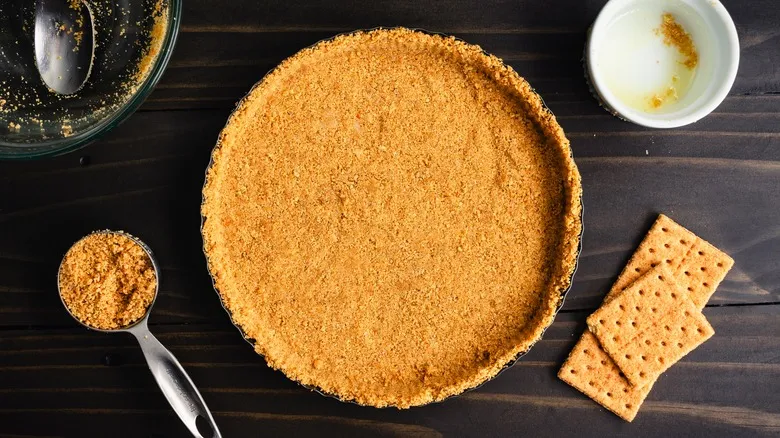
The Case For Baking Your Graham Cracker Pie Crust
Next up

